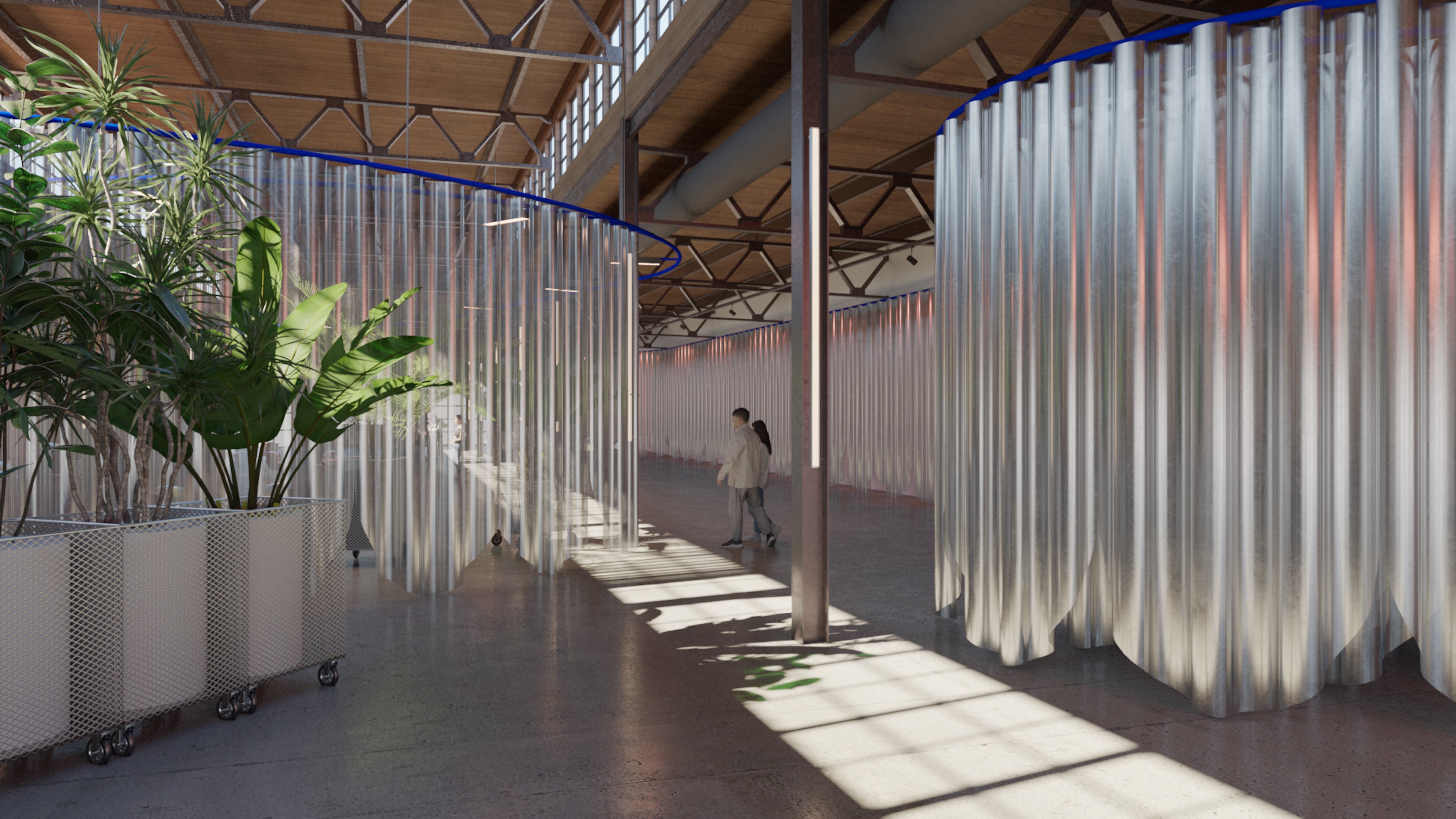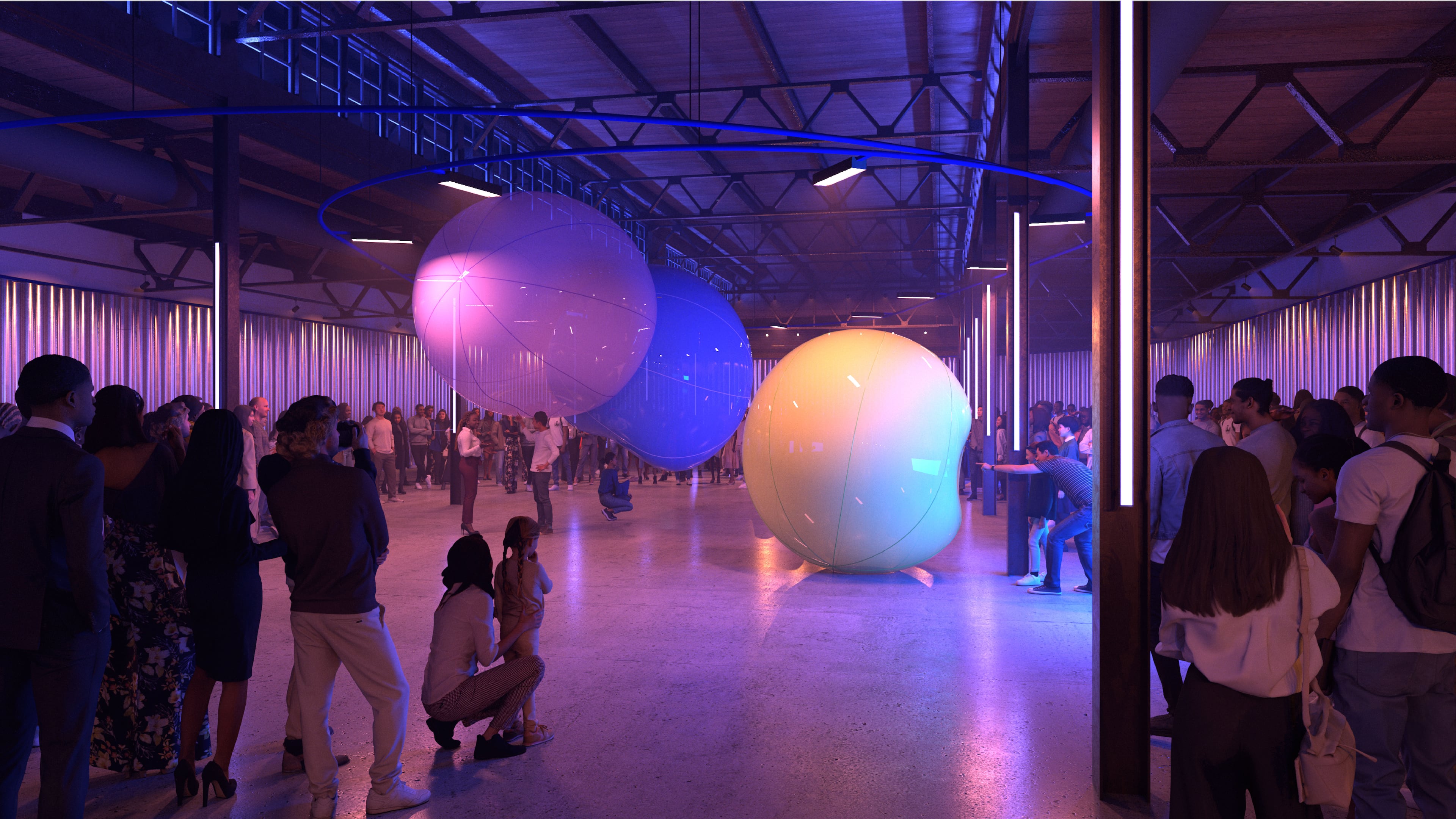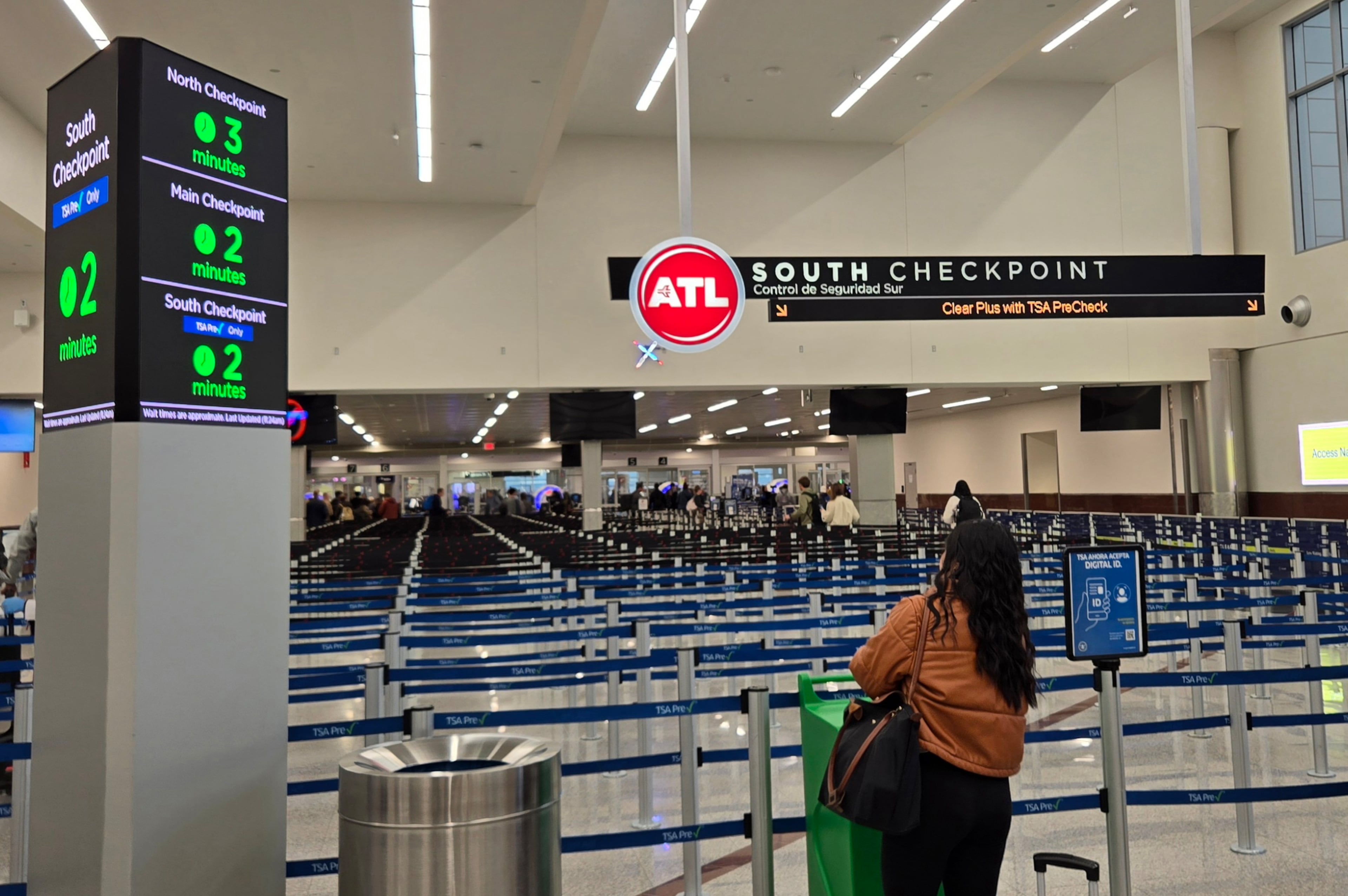First part of Georgia Tech’s ambitious ‘Creative Quarter’ project revealed

A temporary hub for contemporary arts will soon rise on the western edge of Georgia Tech’s campus, a prelude of sorts for an expansion of the campus dedicated to creative arts and industry.
“Loop,” as the space has been named, will bring art installations, performances and immersive events to the 7-acre former Randall Brothers manufacturing site in west Midtown, according to a press release from the university. It will be operated by the Goat Farm Arts Center, Atlanta’s longstanding visual and performing arts complex, and anchored by a performance venue and artist studio.
Loop is expected to be up and running and offering programming by the 2026 FIFA World Cup.
The goal is to connect artists, students, visitors and the larger Atlanta arts community, said Allie Bashuk, Goat Farm’s creative director.
“The Goat Farm acts as this nice artery between the Atlanta art scene, but we’re really familiar with Georgia Tech, so we’re here to bridge the gap as much as possible,” Bashuk said.

The property, which for decades was the headquarters of building materials company Randall Brothers, is primed to be reborn as Creative Quarter, an arts-focused expansion of Georgia Tech in the vein of Technology Square and Science Square.
The idea behind Loop began to emerge when Goat Farm representatives attended a feedback session about the Creative Quarter in January. Publicly announced this summer, Georgia Tech envisions building a hub where new technologies for producing art are developed, shared and experimented with, akin to the innovation districts it has built for life sciences and technology over the last decade. The university’s foundation paid $36 million in 2018. A 1940s-era warehouse remains on the site.
Goat Farm was encouraged to apply to a request for proposals to activate the site in the short-term with a focus on arts, entertainment and technology. The RFP also said the ideal operator would attract activities in film and production, outdoor festivals or corporate and sponsor events associated with the World Cup.
The RFP was due in March, and the following month, the arts organization was awarded the contract.
The space has a three-year contract to occupy the building, Bashuk said. But there is a desire to continue working with Georgia Tech on this project in the long term.
Goat Farm will work with Los Angeles-based production and management company JJLA to book events. Architecture firm MALL-Stayner will spearhead the redesign of the warehouse and its interiors.
Georgia Tech will be pretty hands off in the programming, though two representatives from the university will serve on the curation committee, Bashuk said.
Goat Farm is in the midst of a major transformation at its 12-acrecampus in Blandtown, west of Georgia Tech’s campus. Last April, it revealed the first phase in a $250 million redevelopment that added new art and creative studios, apartments and, opening this spring, a headquarters building for the Museum of Contemporary Art of Georgia. A date hasn’t been set for the opening of the second phase, Bashuk said.
The redevelopment is similar to the Loop in that they both represent an expanding arts scene in the city.
“We think very locally with Atlanta, and that’s where we start. But we’re getting bigger,” Bashuk said. “We’re getting more national and international attention sometimes. Georgia Tech is a very international campus, and now we’ll have the World Cup, so we do have our eyes on a much more global scale. It just will take time.”


